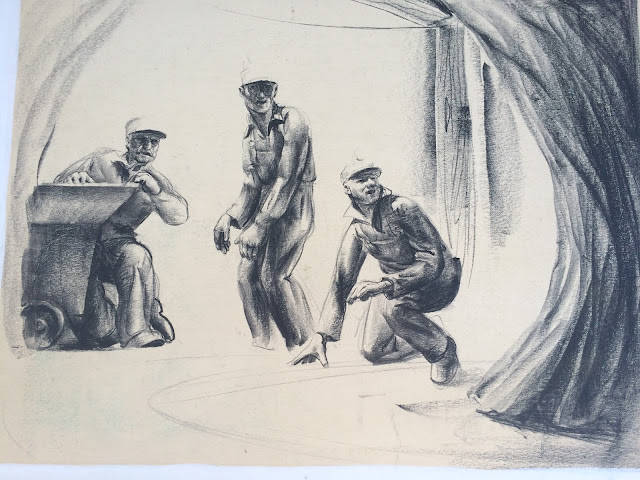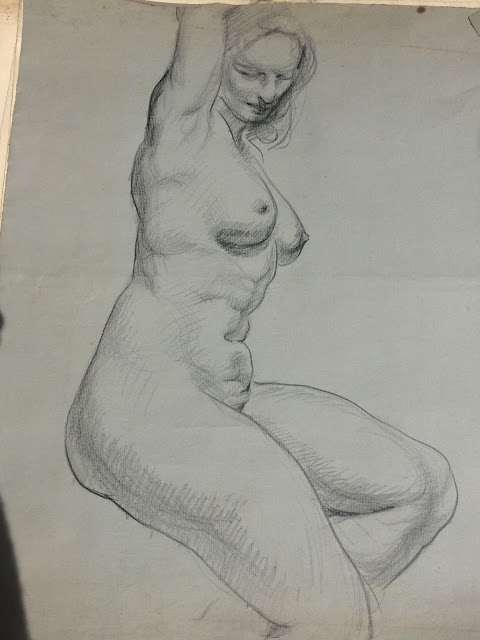We had the opportunity to closely examine the painting below
which was offered for sale at the September Maine auction of items from the Quirk
estate.
 |
| Portrait exhibited at the Pennsylvania Academy of Fine Arts by Francis J. Quirk |
We believe it depicts Francis and his wife Anna attending some type of
event. We suspect it was a wedding,concert or reading of some type as both are
holding leaflets or programs. Like many portraits it features the two decked
out in their finest clothes. Anna rests on a coat with a fur collar wearing a
silk blouse, stylish hat, and fine shoes. Francis wears a blue suit in a
shade close to Anna’s dress. dress. The painting signature is dated 1940 when
Quirk would have been 33 years old.
 |
| Signature of Francis J. Quirk 1940 |
In examining the reverse of the painting we noticed two interesting labels.
The first is an exhibition label from
the Pennsylvania Academy of Fine Arts. The Pennsylvania Academy of the Fine Arts is a museum and art school in Philadelphia, Pennsylvania. It was founded in 1805 and is the first and oldest art museum and art school in the United States. The academy's museum is internationally known for its collections of 19th- and 20th-century American paintings, sculptures, and works on paper. Its archives house important materials for the study of American art history, museums, and art training. The famous Philadelphia painter Thomas Eakins volunteered there as a teacher.
 |
| Pennsylvania Academy of Fine Arts Exhibition Label on Francis Quirk painting |
Oil Painting
and Sculpture by Artists of Philadelphia and Its Environs
April 13 - May 12, 1940
We are in the process of seeking out images from the catalog.
There also was a
restoration label. from Hiram H. Hoelzer, Inc. The company is an art restoration company that
was most recently located in Greenwich, Connecticut, but may no longer be
active. The back of the painting showed no obvious
tears or repairs so we are curious as to the tie with this painting.
 |
| Label on back of Francis Quirk painting Hiram H. Hoelzer Inc. Restorer of Paintings |









































